Keep up to date at http://castor.de/ticker/index_en.html - I will do a wrap-up when it's over.
A train carrying nuclear waste with radiation equivalent to about 100 Hiroshima bombs is running through heavily populated France and Germany to a dump that already contains the equivalent of nearly 900 Hiroshimas. Stored throughout Germany is the radiation equivalent of 10,500 Hiroshimas.
The train has already been held up once for about three hours by people chaining themselves to the track in France. Police dispersing the blockade injured two demonstrators so seriously they needed treatment in hospital, one in surgery.
50,000 protesters are claimed to have travelled to Gorleben, a village of 600 inhabitants located roughly equidistant between the cities of Hamburg and Hanover in central-north Germany, where the waste is headed.
16,500 police have been deployed to ensure that the waste gets to a hall in Gorleben where it’s supposed to cool down for 40 years before final dumping. But where? There isn’t an operative final nuclear waste repository on the globe.
A policeman assigned to the protests has shot himself dead with his service pistol. He left a farewell note and police leaders say the suicide had nothing to do with the assignment. All the same it's likely to put stressed police in a foul mood.
Anti-nuclear activists will try to sabotage a railway line to stop the consignment of 11 caskets for the transportation and storage of nuclear waste, CASTOR for short, from Normandy, where it was recycled in a plutonium factory, to Gorleben (follow the run on an updating map at http://castorticker.de/map.)
It will bring back waste from nuclear fuel originally produced in German power stations and recycled in La Hague, near the Atlantic port of Cherbourg.
La Hague dumps an estimated 230 million litres of radioactive waste into the Atlantic each year. Contamination from La Hague shows up at significant levels in seafood and seaweed near the plant, and strong currents also disperse it northward through the English Channel and the North Sea as far north as Norway and the Arctic.
More than the whole Queensland police force
Demonstrators from all over Germany are expected in the forest and farmland area to which 16,500 police, several thousand more than the entire Queensland force, are sent to ensure the consignment reaches a prefabricated hall outside the village (top half of the landscape picture below). 
The protesters are resigned to the fact that the consignments, which happen about every two years, ultimately always reach the destination, but they delay them as best they can to draw attention to the lack of a permanent repository for nuclear waste anywhere in the world.
Each transport costs about 50 million euros of taxpayers’ money to police. Opinion polls consistently find about two out of three Germans opposed to nuclear energy, produced by 17 power stations in the country.
This year the protesters, who will include political parties, churches and trade unions, intend to hit the last leg of the one-way railway track from the town of Lüneburg (53° 15' 0" North, 10° 24' 0" East) to Dannenberg (53° 6' 0" North, 11° 6' 0" East), a distance of 72 km, much of it through forest. They plan to remove the crushed stone ballast from the trackbed on which the sleepers are laid, to make the track impassable for the 2,700-tonne waste train (above right). The line is being targeted because only the Castor train will travel on it at this time, police stopping all passenger traffic days before the Castors come. The last rail leg and the 20 km trucking from Dannenberg to Gorleben are the most "attackable" parts of the whole trip from France.
intend to hit the last leg of the one-way railway track from the town of Lüneburg (53° 15' 0" North, 10° 24' 0" East) to Dannenberg (53° 6' 0" North, 11° 6' 0" East), a distance of 72 km, much of it through forest. They plan to remove the crushed stone ballast from the trackbed on which the sleepers are laid, to make the track impassable for the 2,700-tonne waste train (above right). The line is being targeted because only the Castor train will travel on it at this time, police stopping all passenger traffic days before the Castors come. The last rail leg and the 20 km trucking from Dannenberg to Gorleben are the most "attackable" parts of the whole trip from France.
Call to remove ballast stones from tracks
A call is travelling through the anti-nuclear movement to take part in what in German is being called “schottern”, a new verb creation from “Schotter”, the German noun for the railbed rocks. One of my contacts in the movement tells me the "schottern" idea "is really on the boil".
 Videos showing how it’s meant to happen are circulating on the Internet and getting thousands of hits. See two typical ones at http://www.youtube.com/watch?v=8pq_NQGuzW4 and http://www.youtube.com/watch?v=S3ReyyTHKGs.
Videos showing how it’s meant to happen are circulating on the Internet and getting thousands of hits. See two typical ones at http://www.youtube.com/watch?v=8pq_NQGuzW4 and http://www.youtube.com/watch?v=S3ReyyTHKGs.
 The ballast is packed between, below, and around the sleepers to facilitate drainage of water, to distribute the load from the sleepers and to keep down vegetation that might interfere with the track structure. This also serves to hold the track in place as the trains roll by.
The ballast is packed between, below, and around the sleepers to facilitate drainage of water, to distribute the load from the sleepers and to keep down vegetation that might interfere with the track structure. This also serves to hold the track in place as the trains roll by.
The local state attorney’s office has started almost 500 investigations into supporters of the "Castor schottern" campaign. “Lay your ear on the rails of history,” says an activist site, “history is going to be made in the Wendland (the name of the area) in November 2010. This time we’ll stop the CASTOR and put the power question out there!” The authorities have closed down one protester Internet site in southern Germany, the posting says. Chief prosecutor Roland Kazimierski is quoted as saying the investigations are also meant as a “deterrent”.
Various groups have stated that “schottern” does not rate as a criminal offence but is a legitimate means of political altercation. They point out that police and judiciary have tried for years to criminalise legitimate resistance. “If elections, demonstrations, requests and begging change nothing, people have to make the changes themselves. Then abandoning nuclear power is literally a hands-on task.”The federal police rates already the "Castor schottern!” call as incitement to dangerous interference with rail traffic, a criminal offence. They’re also citing disturbance of public enterprises. An association of lawyers backing the protesters dismisses that. For rail traffic to be dangerously interfered with, there has to be rail traffic to begin with, they argue. And if the protest was announced beforehand, no endangerment was practically possible.
The Gorleben resistance accuses the Federal Criminal Police Office (BKA) of fomenting fear in the run-up to the Castor shipment. Claiming to be citing a confidential situation assessment, a weekly political magazine said the BKA expects mass blockades on roads and rails as well as targeted acts of sabotage.
The Gorleben-based activists deride this as figments of the imagination. “Not a single organisation, no group calling for protests is calling for violence. What is correct is that a much higher level of protest must be taken into account because we are, after all, expecting more than 20,000 demonstrators on 6 November,” wrote their media spokesman, Wolfgang Ehmke.
Ehmke vehemently contradicts the BKA’s situation assessment. “We are not out to clash with the police. That is why we have called on the Lower Saxony premier, David McAllister, to intervene and finally slice the Gordian knot: Gorleben is geologically incinerated and politically unimplementable, nuclear power is over.”
Wolfgang Ehmke #49 170 510 56 06, Bürgerinitiative Umweltschutz Lüchow - Dannenberg e.V. , Rosenstr. 20, 29439 Lüchow, http://www.bi-luechow-dannenberg.de, office phone #49 5841-4684, fax: -3197, buero@bi-luechow-dannenberg.de
Also track-squat blockades
Other activists will again sit on rails to hold up the Castor train. 

Some will chain themselves to each other to make it harder for police to carry them away. “When we set out it will already be clear who chains themselves to whom on the track and who takes part as usual in the normal track blockade,” a spokesman told the local Elbe-Jeetzel-Zeitung newspaper. The chaining together would be trained beforehand in camp “because it’s a step that requires more courage than just to sit down”.
But the sitters would not distance themselves from the stone removers. There had been “good-neighbourly” talks with them which established that two different protest forms were being offered that addressed different types of people. “Those who want a sit-down blockade on the rails will come to us, those who want to remove stones will join the neighbours.”
There are also to be spontaneous squats on railway lines on Saturday in the railway stations of several cities. At the time of writing this on Thursday the stations named were Hamburg, Dresden, Freiburg, Heilbronn, Fulda, Hannover, Münster and Fulda. More were expected.
Between 1 and 6 p.m. inconspicuously clad people plan to stop trains running during the day with lots of noise and attention.
Other demonstration plans are reported from Bremen and Lüneburg, and in the past few days there were ones in Fürth, Lubmin and Aschaffenburg.
Radicals predict police violence
So-called “autonomous groups” have written that police are sure to attack demonstrators, regardless of what they’re doing, with truncheons, pepper spray and water cannons. Writing at IMC linksunten, one of the two German IndyMedia sites, they say the question remains “what to do when the pigs (police) attack. This consignment is going to be bashed through, so we need to consider our defences.
“Castor?Schottern! has put out the word that approaching police groups should be repelled to leave enough time to really make the track unusable.
“The use of means not generally accepted as ‘non-violent‘ is wanted, such as protective clothing, air mattresses, protest boards, etc, as long as it doesn’t torpedo the fundamental idea nor, obviously, injures other participants in an action.
“So, no throwing stones from the 30th row that would just hit our own. The use of defensive means must be thought about and tactical, whether it’s padding, stones or pepper spray.
“Anyone pursued by cops will find protection in the ranks of the big action, regardless whether it’s someone from a squat blockade, someone who’s removed out ten tonnes of stones or with tactical stone throwing supports a blockade or a stone removal site.
“There’s no doubt that things are going to get really rough at the railway line. This action is not going to be ‘non-violent’. TV pictures will show noses bloodied by police truncheons, eyes reddened by pepper spray; they’ll be blathering about ‘violent autonomous thugs’ and show the one or other injured policeman.
“Hopefully they’ll also air pictures of determined people holding up cops with mattresses, slogan board, stones and fists, people removing tonnes of stones, showing the nuclear state its limits.”
Someone else writing at the same site says there are bound to be police provocateurs doing their job – i.e. inciting violence.
Pulling emergency brakes to paralyse railway network

Another call is running through Internet sites to pull the emergency brakes of passenger trains to paralyse the entire rail network. First published by a newspaper "junge welt" (Young World) the call, attributed to an "Emergency Brake Lesson Committee”, was quickly replicated by activist sites.
The paper wrote that on “Day X” dozens of inconspicuously dressed people will board countless trains and stop them by pulling emergency brakes. “For legal reasons every emergency stop forces the Railways to do a painstaking inspection of the running technology of all carriages, causing stoppages hours long on open stretches. The aim is to paralyse the railways nationwide.”
With little input by few people the transportation of Castors would be seriously slowed down, the paper said.
"We save ourselves a long trip to Gorleben. The Railways as an accomplice of the atomic lobby is efficiently punished. Police are denied the pleasure of bashing us. It will be hard to take legal action against us. And on top of it all, the Railways have to refund our ticket prices because of the delays.”
Activists are advised to pull the brakes before trains are at top speed so that no one gets hurt and where possible, in an unnoticed moment.
"Avoid leaving fingerprints. In the unlikely event of being held, our lawyers advise urgently to say nothing and demand a lawyer. We’ll support you with the costs.”
Berlin commuter traffic hit by cable fire
Much of Berlin’s local commuter rail network, the S-Bahn, was put out of action by a cable fire on 1 November, claimed to have been laid by an anti-nuclear group.
A post was published on linksunten.indymedia.org, one of the two German IndyMedias, claiming the rail arson and also the setting on fire of a vehicle said to belong to Siemens, a company heavily involved in building nuclear power stations.
The text says, “With that, we want to make clear that big corporations will not be able to avoid the protest from the streets. We will attack you directly where you will least expect it.”
“The broad collapse of rail traffic was planned and was to show that the profiteers of the nuclear mafia have no calm hinterland – not in the Wendland, nor in the cities.” The text is signed “kommando sébastien briard” (an allusion to Sébastien Briat, killed by a Castor train).
I share the view of some respondents that we can’t be sure that activists have done this. Police provocateurs have been exposed in the past. Police whistleblowers recently revealed this. There was some criticism on activist sites that the lives of ordinary, vulnerable people were disturbed by the lack of commuter trains. “You damaged thousands of commuters. The S-Bahn and the federal railways couldn’t care a bean,” one critic wrote.
Hooks on powerlines have sabotaged trains
 Whoever laid the fire, it fits a past pattern. Close to past Castor consignment times, general train traffic in various parts of Germany has occasionally been brought to a halt for hours at a time by hooks thrown onto overhead power lines which are torn down when the pantographs of locomotives engage them. Depending on the train’s speed, hundreds of metres of 15,000-volt power line are dragged along. It’s a lethal danger to those attaching the hooks and people on the trains. Almost simultaneously with the power line sabotage, many signaling installations of the railways were set on fire.
Whoever laid the fire, it fits a past pattern. Close to past Castor consignment times, general train traffic in various parts of Germany has occasionally been brought to a halt for hours at a time by hooks thrown onto overhead power lines which are torn down when the pantographs of locomotives engage them. Depending on the train’s speed, hundreds of metres of 15,000-volt power line are dragged along. It’s a lethal danger to those attaching the hooks and people on the trains. Almost simultaneously with the power line sabotage, many signaling installations of the railways were set on fire.
Transport routes off-limits to protesters
Police in the Gorleben area have banned demonstrations from 7 to 16 November in the transport corridors, i.e. rail and road. They do for every consignment and protesters invariably ignore the bans. Fines of 500 euros are threatened. “When the Castors come, democracy goes,” is one of the local resistance slogans. Their organisation is contemplating legal action. It wins most cases, which doesn’t stop police from doing wrong. The cases take years to work through the court system.
Cops forbid farmers’ camp
After previous cooperation with protest organisers and local government, police have started imposing massive restrictions in Lüchow-Dannenberg county, according to an activist Internet site. The coalition of opponents to the Castor transport says police have now banned a camp planned for visiting activists by the farmers emergency committee. No tractors are allowed to drive between the Dannenberg railhead and the Gorleben waste dump.
The police intention seems to be to almost completely and distantly cut road access to the main rally in Dannenberg. They appear to have put into force a kind of state of emergency in the northern part of the county.
Police rated the farmers camp planned for the village of Gusborn as a potential starting point for resistance actions. Earlier another camp was banned in a paddock at the village of Splietau but permitted instead 300 metres on for only 300 people. Splietau was to take in people not able to get into camps near the railway line in case they’re full, and more than 1,000 visitors were expected to be looking there for a place to sleep.
“These developments raise fears that the cops will announce more restrictions aimed at massively curtailing our right to demonstrate and resist,” activists write. “You may have to count on a longer trip with unpleasant experiences. Don’t let them put you off, the demo on Saturday at 1 p.m. is officially registered!
“There might be road blocks far from Dannenberg and Gorleben, massive attempt to intimidate you with constant detours, checks and annoyances like ID checks, body and car searches. Prepare for it. Draw your conclusions and organise your free mobility in the Wendland. Document the restrictions and pass on the information about check points.”
Armed forces to help out police
The state government of Lower Saxony, where Gorleben lies, has been assured by the federal government of support from the armed forces during the demonstrations. A Greens MP, Hans-Christian Ströbele, has claimed that Tornado war planes are flying daily along the Castor rail route taking pictures, but the government says they won’t be used during the demonstrations. Low-flying Tornados were used to photograph and buzz demonstrators in a G8 protest camp in north Germany in 2007.
"There’s no civil war in Wendland, this is citizens revolting against the lobby policy of a government allowing itself to be made the office boy of the energy industry,” their spokesman writes.
Article 35 of the German constitution sets out the conditions under which federal authorities can ask for support from the armed forces: “In order to maintain or restore public security or order, a Land in particularly serious cases may call upon personnel and facilities of the Federal Border Police to assist its police when without such assistance the police could not fulfill their responsibilities, or could do so only with great difficulty. In order to respond to a grave accident or a natural disaster, a Land may call for the assistance of police forces of other Länder or of personnel and facilities of other administrative authorities, of the Armed Forces, or of the Federal Border Police.”
Meaning that the forces can only be brought in to help with a natural disaster or an especially grave accident within the country. “Yet we are always being told that Castor transportation poses no risk to people.”
A Lower Saxony spokesman says the forces won’t do police work during the coming demos. The support would comprise only police using military barracks and being supplied with food by the military. The federal government added the use of helicopter landing pads, parking space for police vehicles and large field kitchens. It’s also suggested, but not confirmed, that in exceptional cases military police could be tasked to regulate traffic or do other work for which police are under-resourced, such as protecting important buildings.
10 to 20 thousand protested at 120 locations
On Saturday 23 October from 10 to 20 thousand Germans protested against radioactive waste transportation at 120 different locations along three railway routes on which CASTOR containers are to run within weeks. On Monday a mock Castor was trucked from Gorleben to the Berlin government district accompanied by 250 protesters. More than 143,000 people have already signed an Internet appeal to indicate that they will protest against nuclear power this autumn. (http://www.atomkraft-abschalten.de). Currently six activists are on trial for stopping a Castor train for more than 12 hours in 2008. Two had chained themselves to the track, four had assisted them. They’re charged with coercion. The Gorleben organisers are putting out a 32-page Castor guide containing “all important information” about the protests, downloadable at http://www.contratom.de/upload/2010_10_23_062753.pdf .
As much radioactivity as 100 Hiroshimas
Each car loaded with one of the white containers weighs up to 140 tonnes. Permits up to now have been for the consignments to comprise 11 Castors of the types HAW 28M and TN85 (Google for explanations), containing highly radioactive waste fused into glass, plus 11 passenger carriages and two locomotives. Another train comprising several diesel locomotives usually follows. The Gorleben Resistance says there are now 91 Castors in the storage hall (left and right).
 About 1,000 Castors containing spent fuel are stored in depots near the German nuclear power stations. An expert in the Gorleben resistance, Wolfgang Kallen, has calculated that one Castor casket contains between nine and ten times as much radioactivity as released by the Hiroshima atom bomb, or that seven Castors contain as much radioactivity as released by the Chernobyl meltdown in April 1986, the worst civilian nuclear disaster known. So one train of 11 Castors is carrying as much radioactivity as 100 Hiroshimas or nearly 1.6 Chernobyls.
About 1,000 Castors containing spent fuel are stored in depots near the German nuclear power stations. An expert in the Gorleben resistance, Wolfgang Kallen, has calculated that one Castor casket contains between nine and ten times as much radioactivity as released by the Hiroshima atom bomb, or that seven Castors contain as much radioactivity as released by the Chernobyl meltdown in April 1986, the worst civilian nuclear disaster known. So one train of 11 Castors is carrying as much radioactivity as 100 Hiroshimas or nearly 1.6 Chernobyls.
The Castor train runs about 1,000 kilometres through densely populated parts of France and Germany, sometimes through and mostly close to cities with big populations. Protesters have stopped past consignments several times in both countries, making it an up to three-day trip. In 2004 21-year-old Sébastien Briat was killed in France when the air suction caused by the locomotive pulled him in and he was run over.
EU wants storage underground
Meanwhile the Brussels-based administration of the European Union is about to call on member states to define national strategies for the storage of radioactive waste, emphasizing the advantages of deep burial underground. "To ensure the implementation of internationally endorsed principles and requirements for spent fuel and radioactive waste management, the proposed Directive makes them legally binding and enforceable," says a draft copy of the proposal.
Roughly half the EU's member states currently operate nuclear power stations, but all have nuclear waste, generated by a range of radioisotope applications in medicine, industry, research and education, as well has electricity production. The commission wants this buried deep underground. 
Entrepreneurs donate to the protests
About two dozen north German entrepreneurs have donated money for the protests. They organised a fundraising rock concert on 3 November in Hamburg at which artists performed for free.
The money raised is to go to the farmers emergency committee to support spectacular protest actions to prevent the Castor train reaching its destination. Farmers and their tractors are always a mainstay of the Wendland protests.
Last year the independent initiative “Entrepreneurs against nuclear power” helped to fund a week-long trek of hundreds of tractors from Wendland to Berlin.
“Our entrepreneurial involvement aims to reflect the impressively broad basis the resistance to continued use of nuclear power has reached. We are happy to support the tens of thousands taking this resistance to the roads and rails the Castors are to take to Gorleben,” said Ingo Werth, manager of a car repair business.
Ralf Gauger, owner of a construction business, said, “Our sponsoring can help the activist groups to make the roads and rails impassable to the Castors. That’s a good investment.” The sentiments were shared by Hamburg media businessman, Frank Otto, one of the two comperes of the concert. “The protests are an uprising of the decent. I have not yet met a capitalist ready to assume the risks of nuclear technology.”
More pictures http://www.publixviewing.de/index.php?cont=show&id=63&n=1
Some more relevant sites:
Aerial video of the dumping area. Images start with the "temporary" storage hall, where spent fuel is to cool down from the 400 degrees Centigrade on delivery to 200 degrees over 20 to 30 years. As the camera pans left, the pithead tower on top of the salt cavern comes into view. 1.5 billion euros have been spent to ready the pit for final storage of waste. "Exploration" of it was stopped for ten years over safety concerns but has just been resumed by order of the conservative-led government of Chancellor Angela Merkel.
 http://www.youtube.com/watch?v=8vbxk3qwUsk
http://www.youtube.com/watch?v=8vbxk3qwUsk
Activists removing ballast from the railbed http://kanalb.org/topic.php?play_id=2158&modul=Clip&clipId=289
People removing stones from the railbed. http://streetart137.blogsport.de/
Ironic “Come to Castor Country” clip. http://www.youtube.com/watch?v=l3fIzguCDjs
Young people in camp preparing for “Biggest Gorleben demo ever?” http://www.greenpeace-jugend.de/node/2688
Hundreds of young people’s alarm clocks ring simultaneously in the city of Bielefeld as a huge banner unfurls down the facade of an office building. http://www.youtube.com/watch?v=gmffWu8XL2E

Three mobilisation clips by the Gorleben resistance group.
https://www.x-tausendmalquer.de/index.php?id=36#c143
Still photographs of demos. http://www.youtube.com/watch?v=5oB6NO5hHt4
Animation of how nuclear waste is produced. http://www.youtube.com/watch?v=BnoTcBCNGDE
Scenic country around the nuclear dumps. http://www.youtube.com/watch?v=nzz1HTlbiSc
Gorleben activists discussing actions. http://wendland-net.de/index.php/artikel/20101010/bi-ratschlag-10243

English trailer of a 43-minute film of a past Gorleben demonstration, quoting activists on why they keep protesting, which they have been doing for more than 30 years.http://www.cinerebelde.org/prozessauftakt-castorgleisblockade-p-100.html
Three witty mobilisation clips: Get to Gorleben any way you can; call to demo wakes even the dead; hip Mum goes too. http://www.youtube.com/user/BiLuechowDannenberg#p/u/1/bcpWJwTA5tg
Berlin mobilisation jingle. Traditionally, a lot of supporters come from Berlin, about 226 kms away. http://castorstop.blogsport.de/2010/09/28/mobi-jingle-online/

On 2 October activists blockaded 10 roads leading into the Gorleben area. http://www.graswurzel.tv/v125.html
http://www.youtube.com/watch?v=B1NSD-RpD3c ditto
http://www.youtube.com/watch?v=DgeZd4hM_tI ditto
References to films of past demos, including a trek by hundreds of tractors to Berlin last year. http://nix-da.6x.to/
Text about removing the railbed stones. http://www.castor-schottern.org/

Facebook traffic about removing railbed stones. http://www.facebook.com/pages/Castor-Schottern/157481940931227
Twitter traffic about removing railbed stones. http://twitter.com/castorschottern

A diary of the consignment and the protests against it is kept up to date at http://linksunten.indymedia.org/en/node/27888.
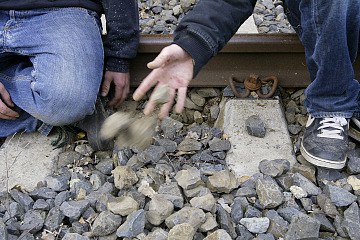
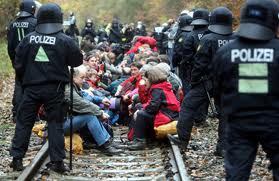
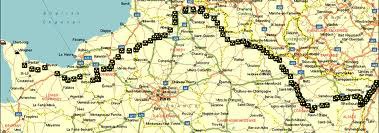


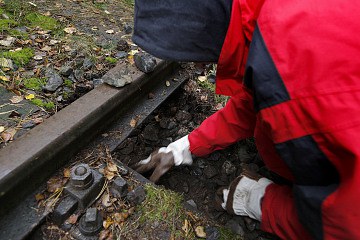

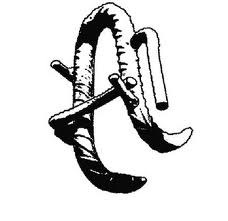


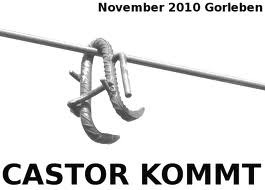
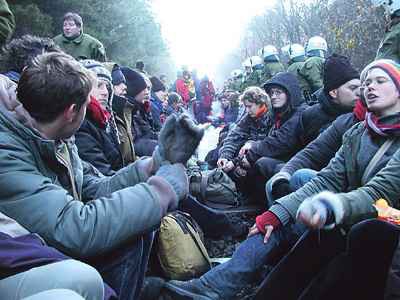




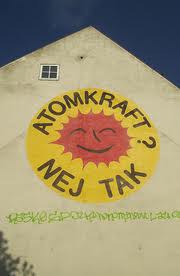




Comments
stupid
abit silly to advertise that this is going to happen, talk about alerting the authorities!
Spies
They knew before it was public knowledge. They have spies in the movement for one thing, and you can't keep a mass mobilisation like this secret.
Why such a long article?
You may wonder why I am writing on this at such length.
Mainly because I want to alert Australians (and I'm one) to the inconceivable dangers heading our way if we allow insane politicians and their industrial puppeteers to force nuclear power generation or storage of other countries' nuclear waste on us.
As they say in Gorben, "When nuclear comes, democracy goes."
I lived in a village near Gorleben for some years.
Diet
Re: German anti-nuclear activists to cripple railway
Thanks Diet, your English overviews were always very welcome on the Dutch indymedia (and often sent to non-German-speaking friends to let them know about the protests). Hope you will go on with it.
Re: 100 times the Hiroshima radioactivity on one train
given plans to bring nuclear waste by train from the nuclear port in darwin down to a remote dump in the middle of the NT, similar actions may have to be taken aGhan
Too few people, too apathetic
How would you mobilise 50,000 activists to the Top End? Or even 5,000, or 500? NT is a soft target. And anyway, as long as the beer's cold and the meat on the barbie, what do your run-of-the-mill Aussies care a shit? The most politically braindead white people I know - except maybe the American Bible Belt prairie folks, none of whom I’ve met personally.